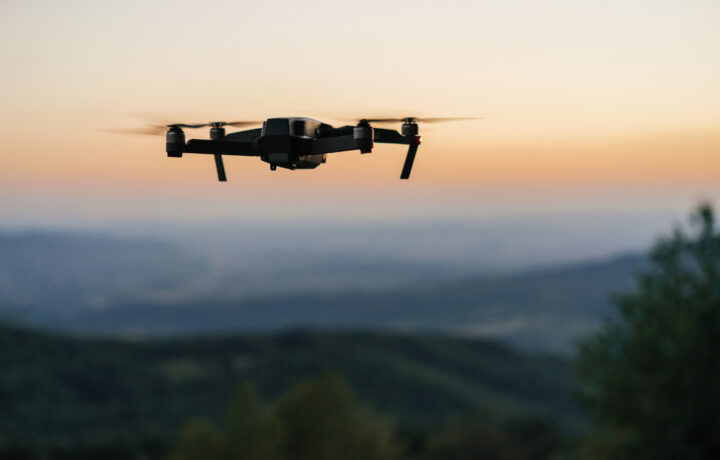Five Chinese nationals and a Cambodian citizen were arrested and charged with espionage in the Philippines recently after the individuals allegedly collected intelligence on U.S. Navy warships as well as critical infrastructure at Subic Bay Freeport Zone, northwest of Manila Bay. This is the latest in what has been reported to be a string of incidents involving suspected Chinese espionage.
The Philippine National Bureau of Investigation (NBI), working with local law enforcement and the Philippine Navy SEALS, arrested the five Chinese nationals and the Cambodian, along with a Filipino citizen, on Grande Island, which is located near the entrance to the bay.
According to a report from Marine Insight, citing NBI Director, Jaime Santiago, the arrested Chinese nationals had been identified as Nan Ke, Xu Xining, Ye Xiaocan, Dick Ang, Su Anlong, and Qui Feng (also known as Quing Feng); while Filipino citizen, Melvin Aguillon, had acted as their bodyguard. He was taken into custody for carrying an unregistered firearm.
According to immigration records, all six of the nationals frequently traveled to the Philippines. They were disguised as fishermen and tourists while they gathered data on naval operations, including the location of U.S. warships. They had been spotted by locals as flying drones that also monitored U.S. and Filipino military assets. The individuals were found with photos of the U.S. Navy’s Independence-class littoral combat ship USS Savannah (LCS-28) and a Henry J. Kaiser-class replenishment oiler.
History of Naval Activity at Subic Bay
Though it is now a Freeport Zone, it was established as a naval facility by Spain in 1885 during its colonial rule of the Philippines, and captured by the U.S. during the Spanish-American War. It was greatly expanded by the U.S. military as U.S. Naval Base Subic Bay. Occupied by the Imperial Japanese Navy during the Second World War, it was liberated in 1945, and further expanded during the Cold War.
After Clark Air Base in Angeles City in the Philippines was closed in 1991, Naval Base Subic Bay was briefly the largest U.S. overseas military installation until it was also closed in 1992, following the 1991 Mount Pinatubo volcanic eruption. It was subsequently transformed into the Subic Bay Freeport Zone.
Following the 2022 Enhanced Defense Cooperation Agreement between Washington and Manila, plans were drafted to reopen a portion of the base due to heightened tensions with China. In addition, U.S. ships have employed the facilities as a resupply port. It was announced last month that a new United States Marine Corps prepositioning program began as the service leased a 57,000-square-foot warehouse. It will be used for humanitarian assistance and disaster response efforts as needed.
Just the Latest Arrests Involving Espionage
The arrest of the seven individuals follows another in January in the Philippines of a Chinese national and two Filipino associates, who are accused of gathering intelligence on a military installation; and that of Alice Guo, a former Filipino mayor who is believed to have ties to Chinese criminal syndicates linked to human trafficking. Guo has pleaded not guilty.
In June 2024, three Chinese students were arrested after employing a small drone to illegally record a video of the United States Navy’s Nimitz-class nuclear-powered aircraft carrier USS Theodore Roosevelt (CVN-71) while the warship was docked at the South Korean Naval Operations Command (NOC) in the southeastern city of Busan. The Chinese nationals were accused of violating the Enforcement Decree of the Protection of Military Bases and Installations Act.
It was a year ago, in April 2024, that a video and photos of the Nimitz-class carrier USS Ronald Reagan (CVN-76) circulated on X, the social media platform formerly known as Twitter, while the warship was in port at Yokosuka, Japan. Multiple photos seen online further showed details about the U.S. Navy’s amphibious command ship USS Blue Ridge (LCC-19), multiple destroyers, and much of the base’s port facilities.
The U.S. Navy has speculated, but never confirmed, that a civilian drone was involved. It was further believed that a Chinese citizen recorded the video. Another Chinese drone was also suspected of recording the JMSDF’s JS Izumo, a helicopter carrier currently being modified to operate as an aircraft carrier with the short/vertical takeoff and landing F-35B Lightning II multirole fighter.
Flying a drone over JMSDF-related facilities, including the Yokosuka base, and surrounding areas, is prohibited by law. Drone flights are also restricted above key public and diplomatic areas, as well as nuclear power facilities in Japan.
Another Chinese citizen, Yinpiao Zhou, was arrested in December for allegedly flying a drone and taking pictures of Vandenberg Space Force Base (SFB), California.
Multiple U.S. Navy sailors have also been arrested and charged with sharing military secrets with China, highlighting the efforts Beijing has gone to in attempting to gain access to the U.S. Navy’s capabilities.




